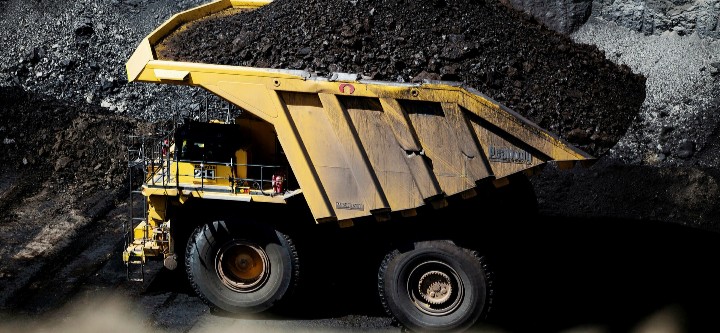|
Getting your Trinity Audio player ready...
|
By Calvin Manika
Zimbabwe is among the nations attending the COP26 conference in Glasgow, Scotland next month. Like many third world countries it has been equally affected with climate change as evidenced with successive droughts and unreliable rainfall in some seasons.
The rise in temperatures in many parts of Zimbabwe shows the brutal effects of climate change.
Some experts are worried that regardless of being affected from activities from developed countries, countries can p-lay their part, and Zimbabwe can reduce its consumption of coal.
Besides being a hope for power source, coal mining in Hwange creates employment to thousands of people in Hwange and others in coal chain industry. Some of the residents in Hwange express their concern.
“Thousands of people are in the coal mining industry in Zimbabwe. As far as the ban of coal use will reduce the emission of greenhouse gases, it’s a bad news to coal miners and their workers. But, after all we are not the major contributors of climate change, maybe we need to adapt environmentally friendly methods when dealing with coal,” says Ngonidzashe Murombo.
According to the Ministry of Mines and Mining Development, Zimbabwe holds 553 million tons of proven coal reserves as of 2016, ranking 38th in the world and accounting for about 0% of the world’s total coal reserves of 1,139,471 million tons.
Zimbabwe has proven reserves equivalent to 163.3 times its annual consumption. Zimbabwe consumes 3,388,555 Tons of Coal per year as of the year 2016.
Zimbabwe ranks 53rd in the world for Coal consumption, accounting for about 0.3% of the world’s total consumption of 1,139,471,430 tons. Zimbabwe consumes 241,516 cubic feet of Coal per capita every year (based on the 2016 population of 14,030,331 people), or 662 cubic feet per capita per day.
Most of the coal mining companies in Zimbabwe export within the Southern African Development Community and overseas depending on port availability and other logistics.
Recently, China announced that, it will not finance coal powered projects making the future of coal projects in many countries including Zimbabwe uncertain.
Zimbabwe has faced with power challenges and its hope is pinned on the expansion of Hwange power station, a coal powered plant.
An indication which gives a dim hope that Zimbabwe will quit coal mining soon. Besides used for power generation, coal brings thousands of the much needed foreign currency in Zimbabwe.
Hwange Power Station has installed capacity of 920 megawatts, but is currently producing 300 -420 megawatts. Zimbabwe Power Company through its contractor is expanding by an extra 600 megawatts, which is now 76% complete. Currently, the plant consumes 5,000 tons of coal a day, but this will triple once two new units are commissioned probably next year.
The project site manager Engineer Forbes Chanakira while presenting the overview of the Hwange Expansion Project said it aim at generating 600 megawatts (2x300MW).
According to the baseline schedule, the first (300MW) unit was supposed to be on commercial operation on October 2021 while, the second (300MW) unit with the same capacity on January 2022.
However, due to the effects of Covid–19 pandemic, the completion has been re-scheduled to July and September 2022 respectively.
Engineer Chanakira cited Covid-19 and IPC payments as key reasons for project delay
“Covid-19 affected the project on design, manufacturing and logistics and manpower mobilisation, while IPC payments also affected areas to do with manufacturing and logistics and manpower mobilisation of key skills for installation,” said Chanakira.
In 2019, primary coal production for Zimbabwe was 2,132 thousand short tons.
Though Zimbabwe primary coal production fluctuated substantially in recent years, it tended to decrease through 2000 – 2019 period ending at 2,132 thousand short tons in 2019.
The sum of sales, mine consumption, issues to miners, and issues to coke, briquetting, and other ancillary plants at mines. Production data include quantities extracted from surface and underground mines, and normally exclude wastes removed at mines or associated reparation plants. Primary coal is all coal milled and, when necessary, washed and sorted.
According to Energy Data Brief, the number of countries announcing pledges to achieve net-zero emissions over the coming decades continues to grow. But the pledges by governments to date – even if fully achieved – fall well short of what is required to bring global energy-related carbon dioxide emissions to net zero by 2050 and give the world an even chance of limiting the global temperature rise to 1.5 °C.
The Brief in 2019 said phasing out coal requires expanding the notion of a ‘just transition’ and a roadmap that specifies the sequence of coal plant retirement, the appropriate policy instruments as well as ways to include key stakeholders in the process.
A report by the International Energy Association indicates that, despite decades of knowledge about its contribution to climate change, coal combustion still accounts for 40% of global CO2 emissions from energy use.
The power sector must stop using coal without carbon capture and storage by approximately 2050 if the Paris Agreement climate goals are to be achieved.
Globally, the coal mining industry alone employs about 8 million people and creates revenues of more than US$900 billion a year.
While growth in coal investments is slowing and COVID-19-induced electricity demand reductions have cut coal-fired electricity output in 2020, coal use is unlikely to decline substantially in the medium term.






